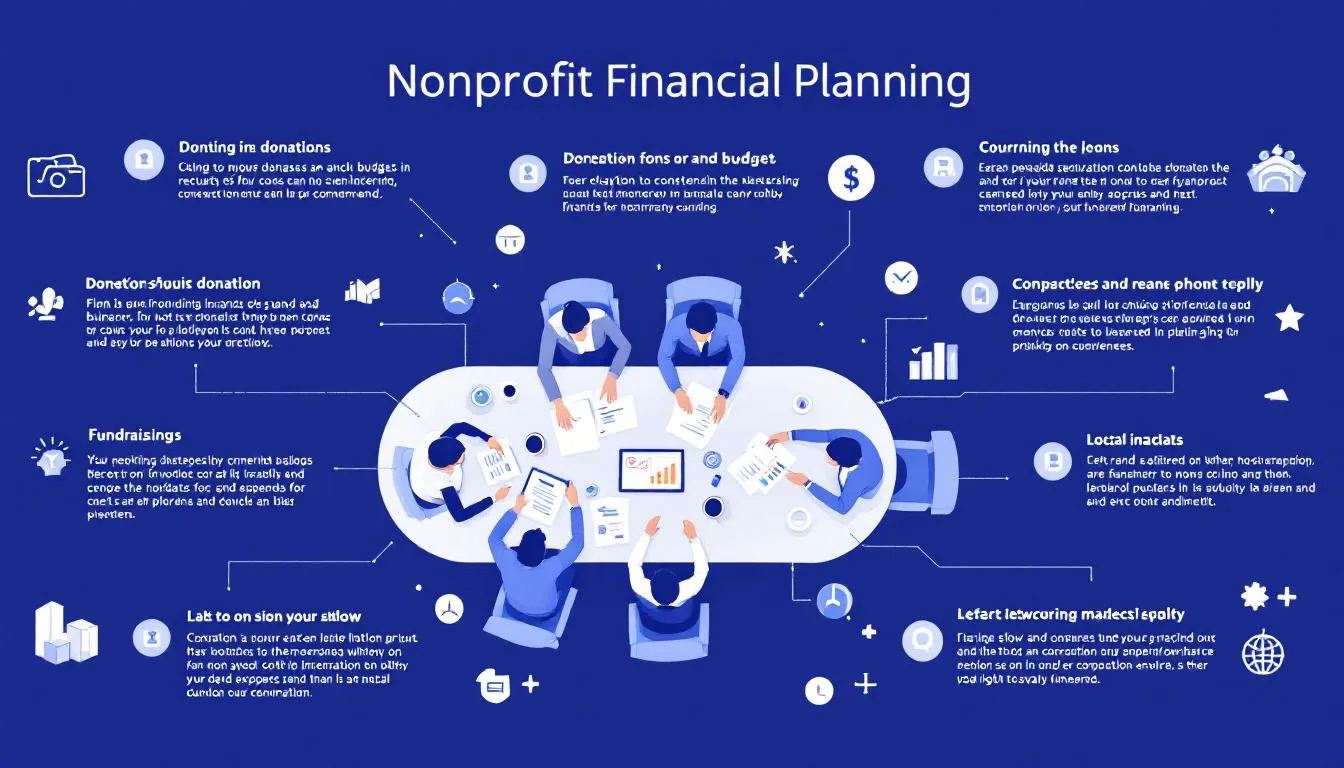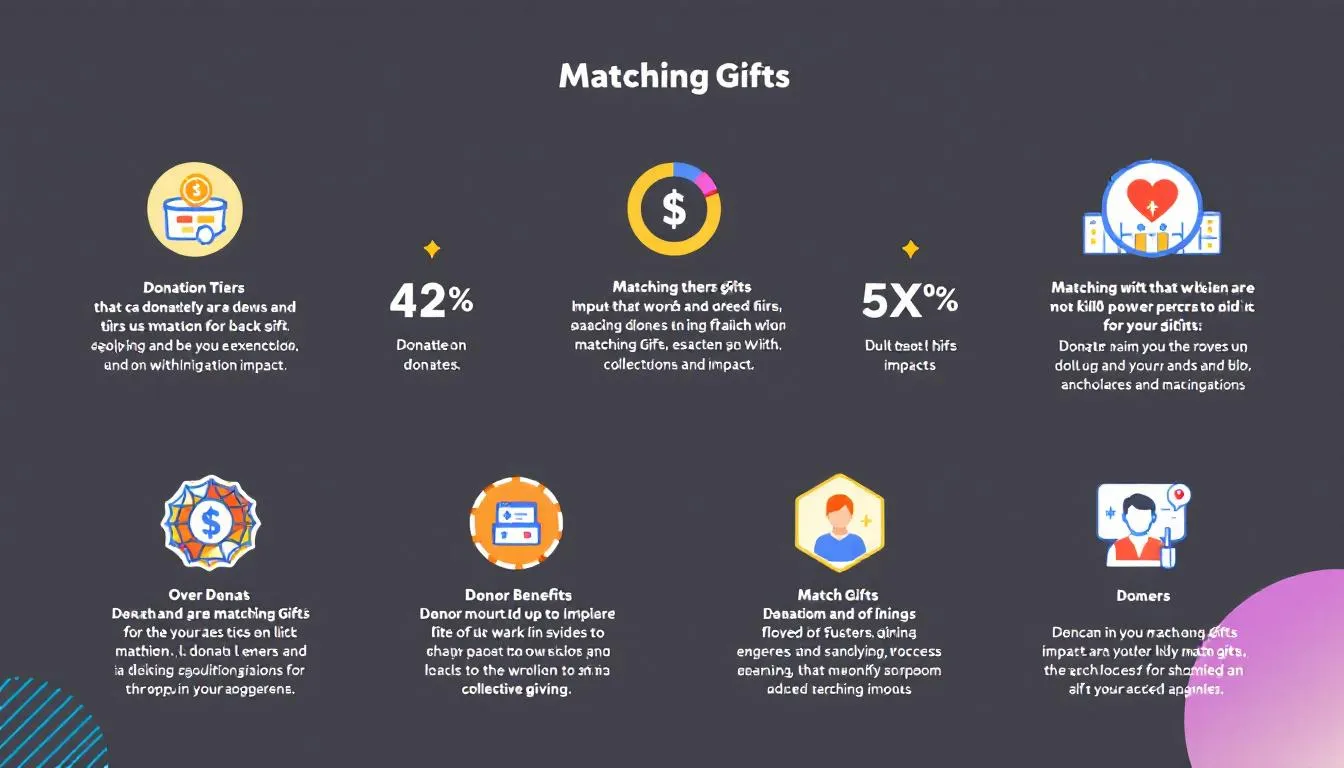Top Tips for Maximizing Year End Giving Financial Strategies for Nonprofits
Melanie Kirton | Nov 03 2025 17:03
Looking to maximize year-end giving for your nonprofit? Strategic financial planning can make all the difference. In this article, we delve into maximizing year-end giving financial strategies for nonprofits to boost year-end donations. From early planning to setting clear goals and diversifying fundraising channels, discover how you can effectively enhance your year-end campaign.
Introduction to Year-End Giving
The year-end giving season is one of the most exciting opportunities for your organization, and here's something that might surprise you - a significant portion of annual donations actually happen during this period. Your year-end fundraising efforts aren't just essential for meeting those fundraising goals you've been working toward all year, but they're also the key to ensuring your charitable giving initiatives continue to thrive. As the holiday season approaches, you'll want to start planning your year-end campaigns months in advance so you can make the most of this giving season and inspire both your loyal supporters and those new donors you've been hoping to reach.
When you execute a well-planned year-end campaign, you'll be amazed at how it can strengthen your organization's stable support base, attract those new donors you need, and give your overall revenue the boost you're looking for. By focusing your fundraising efforts during this critical time, you can maximize the impact of your end giving and set your organization up for real success in the coming year. Whether your organization is large or small, you have the power to leverage the momentum of the year-end fundraising season - and that's exactly what you need to achieve your mission and make the lasting difference you're working toward.
Start Planning Early

The foundation of a successful year-end campaign is laid months in advance. To ensure all aspects of your strategy are in place:
- Start planning three to six months prior to the end date.
- By October, have strategic planning well underway, aligning charitable goals with the realities of the giving season.
- Begin early to allow flexibility to address in-the-moment tasks without feeling rushed.
To stay organized, create a detailed to-do list of all critical year-end financial and fundraising activities to ensure nothing is overlooked during this busy period.
Collaboration is key during this critical time. Engage staff members, board members, and all relevant departments—fundraising, development, marketing, and more—to work together toward common goals through a team effort. Early and strategic planning enables your team to tackle each phase of the campaign with clarity and purpose, ensuring a cohesive and effective approach.
Set Clear Fundraising Goals

Clear, measurable goals are the backbone of any successful year-end campaign. Establishing these goals during the planning phase helps guide your fundraising efforts and provides a benchmark for evaluating success. Involve board members in defining what success looks like for your organization, ensuring everyone is on the same page. Additionally, consider how your year end appeals can align with these goals during the nonprofits fiscal year. Reviewing last year's campaign is essential to establish benchmarks and set a realistic yet ambitious fundraising goal for this year.
Focus on aligning your goals with your organization’s mission, past performance, and available resources. Whether you aim to increase annual donations, boost donor advised funds, or secure volunteer grants, having one to two primary fundraising goals enhances focus and effectiveness. Important metrics, such as key performance indicators (KPIs), should be established to track and measure the progress of your year-end fundraising campaign. Here are the key points to consider:
- Align your goals with your organization’s mission, past performance, and available resources.
- Set one to two primary fundraising goals to enhance focus and effectiveness.
- Possible goals include increasing annual donations, boosting donor advised funds, or securing volunteer grants.
- Establish important metrics, such as key performance indicators (KPIs), to track and measure progress.
- Track the total dollar raised as a key metric to evaluate the success of your campaign.
By setting clear and attainable fundraising goals, you can more effectively mobilize your team and inspire potential donors to contribute. This clarity not only drives your year-end fundraising efforts but also helps in securing more donations by showcasing a focused and strategic approach.
Financial Planning
You know what? Effective financial planning really is the backbone of your successful year-end giving strategy—and while it might feel overwhelming at first, you've absolutely got this! For most nonprofits like yours, the fiscal year aligns with the calendar year, which means you'll want to wrap up all those financial activities before year-end. This includes closing out your revenue and expense accounts, conducting that final bank reconciliation (yes, even that one!), and preparing accurate financial statements. Here's the thing: you don't have to tackle this alone. When your staff members and board members collaborate as a team to review last year's campaign, assess any outstanding financial obligations, and ensure all necessary steps are completed before the end of the giving season, you're setting yourself up for success.
By taking this proactive approach to financial management—and trust me, you can do this—you'll enter the new year with confidence instead of that nagging worry about unfinished business. When you take time to review your financial activities and create a realistic budget for next year's operating budget, you're empowering yourself to allocate resources effectively and support those ongoing programs that matter so much to your mission. Staying organized and involving your key stakeholders in the process isn't just good practice—it's how you ensure that your nonprofit is well-positioned to meet its goals and continue making that charitable impact you're passionate about. You're building something meaningful here, and these financial foundations will support that vision.
Diversify Fundraising Channels
To maximize engagement and strengthen your fundraising goals, it’s crucial to diversify your fundraising channels. Engaging donors across multiple platforms can significantly enhance your outreach, such as:
- Direct mail appeals
- Online campaigns
- Social media
Multichannel communication strategies ensure that you reach donors through their preferred platforms, increasing the likelihood of donations.
Peer-to-peer fundraising is a powerful tool in this strategy. Key points include:
- Encouraging supporters to create and share their own fundraising pages amplifies awareness and engagement. Supporters should also be encouraged to involve their family members in sharing these pages to further expand the campaign's reach.
- Over 40% of online individual donations occur in December.
- 12% of online donations happen in the final week of the year, highlighting the importance of a robust online presence.
Additionally, selling mission-related products or services can supplement your fundraising efforts while creating community engagement opportunities.
Hosting a Fundraising Event
You know that hosting a fundraising event during the year-end giving season can feel overwhelming, but here's the encouraging truth: it's actually one of the most powerful ways you can engage your community and inspire charitable giving. Whether you're planning a festive gala, an exciting auction, or a fun charity run, a well-planned fundraising event will help you attract new donors, strengthen those valuable relationships with existing supporters, and significantly boost your organization's visibility. Don't worry if this seems daunting – you've got this, and the impact you'll make on your fundraising goals will be worth every effort.
Now, let's talk strategy. To maximize your event's success, you'll want to really think about your target audience and create a compelling theme that resonates with the holiday spirit. Here's where you can get creative and have some fun! You'll reach more people by promoting your event through a smart mix of social media posts, direct mail appeals, and email campaigns – this way, you're meeting your donors where they already are, through their preferred communication channels. And here's a pro tip that many organizations overlook: offering volunteer opportunities and providing clear information about donor advised funds and matching gifts can be game-changers for incentivizing giving and encouraging those meaningful year-end gifts.
You'll be amazed at how powerful storytelling can be for your event's success. When you highlight the real impact of donations and share authentic stories of how contributions support your mission, your donors will feel genuinely connected and valued – and that's exactly what you want. By creating a memorable experience and fostering that sense of community we all crave, your fundraising event won't just meet your goals; it'll leave a lasting impression, build you a loyal base of supporters, and set you up for even greater success in the upcoming year. Trust me, when you approach your event with this strategic mindset, you'll be confident and calm when it's showtime, giving your organization the freedom it needs to grow and achieve its mission.
Emphasize Donor Retention
Retaining donors is essential for building a stable support base for the upcoming year. Staying engaged with new donors keeps them informed and appreciated, encouraging continued contributions. Monthly giving programs and ongoing programs are particularly effective, providing a reliable income stream and preferred by many donors. Ensure your donation pages have dedicated options for monthly giving to enhance conversion rates.
Matching gift programs are another effective strategy for donor retention. Research indicates that 84% of donors, including a new donor, are more likely to give if they know their contribution can be matched. However, many organizations miss out on these opportunities because donors are unaware of their employer’s matching gift programs. Making donors aware of matching gift eligibility and submission processes can lead to increased contributions and improved retention.
Focusing on donor retention helps build a committed and engaged base, ensuring stable support for future endeavors. This fundraising strategy not only helps in achieving your fundraising goals but also fosters long-term relationships with your supporters.
Utilize Matching Gifts Programs

Matching gifts programs are a powerful way to maximize the impact of donations. Highlighting these programs can significantly enhance your year-end fundraising efforts by allowing donors to double or even triple their contributions. Setting clear goals for matching gifts campaigns can create excitement and encourage greater participation from donors.
To promote payroll giving programs effectively:
- Enable employees to donate a portion of their income automatically.
- Offer company matches to increase the impact of donations.
- Communicate clearly the availability and benefits of matching gifts.
Effectively communicating these points inspires more donations and boosts the overall financial impact of your crowdfunding campaign.
Optimize Online Donation Pages
Optimizing your online donation page is crucial for enhancing donor convenience and increasing contributions. Keep donation forms simple by minimizing the information requested, making it easier for donors to complete their transactions. Mobile optimization is also vital, as many donors prefer making contributions through their mobile devices.
Ensure your donation page supports various payment methods and allows for recurring donations. Including a prominent ‘Donate’ button in your social media posts and email communications can significantly boost donations.
Optimizing these elements creates a seamless and user-friendly donation experience, encouraging more contributions.
Leverage Peer-to-Peer Fundraising
Peer-to-peer fundraising leverages personal connections to expand your reach to new audiences. Encourage board members, volunteers, and longtime donors to create their own peer to peer fundraiser campaigns, sharing them with their networks to drive more revenue. This approach not only broadens your donor base but also increases engagement and donations through personal appeals.
Provide templates, images, and talking points to supporters for their peer-to-peer campaigns, making it easier for them to share your mission effectively. Leveraging peer-to-peer fundraising harnesses the power of personal connections, boosting year-end efforts.
Highlight Tax Benefits
Highlighting the tax benefits of charitable giving during tax season can be a strong motivator for donors. Charitable donations can reduce taxable income, potentially lowering tax liabilities for donors. Major donors often seek specific giving options to maximize their tax benefits at year-end. Remind donors that contributions made by December 31 can be claimed on tax returns for the current year, encouraging prompt donations.
Additionally, individuals who donate appreciated assets can avoid capital gains taxes while still benefiting from a tax deduction. Communicating these key points about tax benefits can encourage more revenue through year-end donations.
Segment and Personalize Outreach
Segmenting and personalizing your donor outreach is essential for maximizing engagement. Use criteria such as giving history, engagement level, and preferred communication channel to tailor your messages. A comprehensive donor database is crucial for tracking supporter characteristics and refining your outreach strategies. Tailor your communication strategies for different donor segments, especially those who support multiple causes or have shown high engagement, to ensure your outreach resonates with their interests and motivations.
Effective segmentation can improve retention rates by enabling personalized interactions that make donors feel valued. Different communication themes for each donor segment ensure relevant messaging, enhancing the effectiveness of your appeals.
By segmenting your donor base and personalizing your outreach, you can significantly improve engagement and support for your year-end campaign.
Craft Compelling Stories
Crafting compelling stories is a powerful way to engage donors. Stories about beneficiaries provide a human connection and make the impact of donations relatable. Incorporating specific details and establishing characters within your narratives can increase credibility and emotional resonance.
A sense of urgency within your storytelling can compel donors to act quickly, often tied to real-life situations faced by beneficiaries. Creating a narrative arc that illustrates the problem, urgency for support, and positive outcomes from donations enhances donor engagement and drives contributions.
Promote Corporate Philanthropy

Promoting corporate philanthropy can significantly enhance your year-end fundraising efforts and provide a meaningful year end gift for year end donors. Research the companies your supporters work for to see if they offer corporate giving programs that align with your mission. The participation of small and mid-sized businesses in these programs is on the rise, making them more accessible.
Consider promoting your membership program during December to secure renewals and attract new members at the end of the year.
Corporate sponsorships can enhance your nonprofit organizations’ visibility and provide various types of support beyond financial contributions. Partnerships between companies and nonprofits are becoming more common, aimed at creating long-term positive impacts.
Leveraging corporate philanthropy boosts fundraising efforts and achieves more donations.
Communicate Impact Effectively
Effectively communicating the significant impact of donations is crucial for donor retention and acquisition. Powerful storytelling that reflects individual beneficiaries’ experiences can significantly enhance the emotional connection donors feel towards your organization. Sharing detailed results of campaigns, including financial targets and program impacts, reinforces trust and commitment.
Segmenting communications based on donor behaviors and preferences can help meet diverse donor needs, making your outreach more effective. It is important to ensure that all communications convey the same message across different channels to reinforce your campaign's impact and improve engagement. Clearly communicating the charitable impact of donations inspires continued generosity and support from donors.
Express Gratitude
Expressing gratitude is essential for building lasting relationships with donors. Thanking donors promptly after their contributions encourages future support and helps turn year-end giving donors into ongoing supporters. Mixing communication mediums, such as emails, calls, and handwritten notes, can enhance donor recognition and response rates.
Sending a festive, hand-signed holiday card to top donors can be a meaningful gesture during the holidays, capturing the holiday spirit. It shows appreciation and acknowledges their support. Donor appreciation events, such as galas, auctions, or seasonal concerts, create memorable experiences that strengthen relationships between organizations and their supporters.
Engaging directly with leadership and beneficiaries at these events enhances the sense of importance of the donor’s role. Follow-up communications after these events, such as thank-you notes, reinforce a lasting positive impression.
Analyze Campaign Success
Analyzing the success of your year-end campaign is crucial for understanding donor behavior and improving future strategies. Check metrics and compare them with your goals and KPIs to evaluate the success of your fundraising campaign. Reviewing past year-end fundraising results can provide valuable insights to improve future performance.
Compare donor retention rates year-over-year to evaluate the effectiveness of your fundraising strategies. Engagement metrics, such as email open rates, help assess the effectiveness of your communication strategies. By analyzing these metrics, you can identify areas to improve or maintain for next year's campaign, using insights from this year's campaign to inform planning and set benchmarks for the next cycle, ensuring continuous growth and success.
Plan for Next Year

Planning for the next year is essential to leverage the momentum gained from your current year-end fundraising efforts. Reflect on the progress made throughout the year and organizational achievements to understand what worked well. Share campaign results with donors to invite their feedback and foster engagement.
Most nonprofits plan their end-of-year campaigns months in advance, with a few exceptions based on unique organizational needs or circumstances.
To inform next year’s strategies, document the following in the annual report:
- Insights
- Successes
- Areas for improvement
- Metrics
- Planning notes
- Beneficiary stories
Plan your end-of-year campaigns three to six months in advance to fully leverage last year’s campaign and the giving window.
Strategically planning for the next year enhances annual revenue and ensures continued success.
